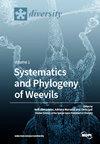中亚野生核桃多态微卫星标记的开发及其应用鉴定
IF 2.1
3区 生物学
Q2 BIODIVERSITY CONSERVATION
引用次数: 0
摘要
普通核桃(Juglans regia L.)是一种具有重要经济和生态意义的物种,其变种具有发展价值。简单序列重复(SSR)标记具有共显性遗传特性,是一种有效的材料鉴定方法。基于已发表的核桃基因组序列,共检索到357629个SSR位点,SSR位点密度为662.28 (SSRs/Mb)。其中单核苷酸A/T占58.49%,其次是二核苷酸AT占19.48%。基于全基因组SSR位点设计结果,设计筛选22对有效引物,对来自3个国家的48份野生核桃样品进行遗传多样性分析。每个位点平均有5.17个有效等位基因(Ne),平均多态性信息含量(PIC)为0.71,平均杂合度(He)为0.52,平均遗传分化指数(Fst)为0.09。对来自吉尔吉斯斯坦、塔吉克斯坦和中国的48个野生核桃样本进行了非加权两两聚类和算术平均(UPGMA)分析,并结合主坐标分析,结果表明所有样本可分为三组。综上所述,这些新的SSR标记可为中亚野生核桃种质资源的鉴定和野生核桃种子资源的开发利用提供参考。本文章由计算机程序翻译,如有差异,请以英文原文为准。
Development of Polymorphic Microsatellite Markers and Identification of Applications for Wild Walnut (Juglans regia L.) in Middle Asia
The common walnut (Juglans regia L.), a species of significant economic and ecological importance, along with its variant, holds developmental value. Simple sequence repeat (SSR) markers are used as an effective method for material identification due to their co-dominant inheritance. In this work, a total of 357629 SSR loci were searched based on previously published walnut genome sequences, with a density of 662.28 (SSRs/Mb). The majority of all these loci were found to be single nucleotide A/T (58.49%), followed by the dinucleotide AT (19.48%). Based on the results of genome-wide SSR site design, 22 effective primer pairs were designed and screened to analyze the genetic diversity of 48 wild walnut samples from three countries. Each locus had an average of 5.17 effective alleles (Ne), with an average polymorphism information content (PIC) of 0.71, average heterozygosity (He) of 0.52, and average genetic differentiation index (Fst) of 0.09. The analysis of 48 wild walnut samples from three countries (Kyrgyzstan, Tajikistan, and China) using the unweighted pairwise clustering method and arithmetic mean (UPGMA) along with principal coordinate analysis revealed the division of all samples into three groups. In summary, these novel SSR markers serve as a reference for the identification of wild walnut germplasm in Central Asia and for the development and utilization of wild walnut seed resources.
求助全文
通过发布文献求助,成功后即可免费获取论文全文。
去求助
来源期刊

Diversity-Basel
Environmental Science-Ecological Modeling
CiteScore
3.40
自引率
12.50%
发文量
925
审稿时长
11 weeks
期刊介绍:
Diversity (ISSN 1424-2818) is an international and interdisciplinary journal of science concerning diversity concept and application, diversity assessment and diversity preservation. It is focused on organismic and molecular diversity. It publishes reviews, regular research papers and short notes in the regular issues. Related news and announcements are also published. Our aim is to encourage scientists to publish their experimental and theoretical results in as much detail as possible. Therefore, there is no restriction on the length of the papers. Full experimental details must be provided so that the results can be reproduced.
 求助内容:
求助内容: 应助结果提醒方式:
应助结果提醒方式:


